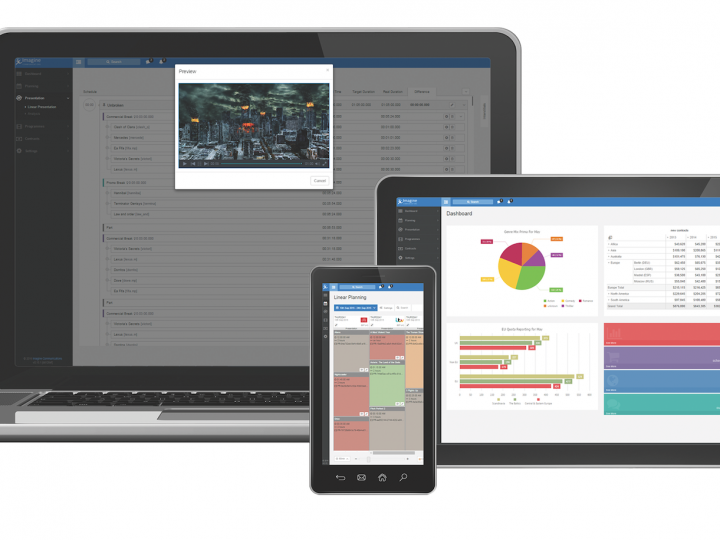[24 June 2014]
The second series of House of Cards, Netflix’s hugely popular political drama, was released on 14 February and made available to subscribers in 4k Ultra HD. Encore, a Deluxe Entertainment Services company, handled the show’s post production, with Lead Colourist Laura Jans-Fazio grading in uncompressed 4k at the post-production and VFX company’s Los Angeles location. To achieve the desired results, she leveraged a Baselight TWO system and Blackboard control surface.

Photo credit: Nathaniel Bell for Netflix
The drama was captured on RED cameras, some using the HDR functionality for extended contrast and colour dynamic range. The floating-point processing in Baselight gave Laura new creative options. Windows that appeared blown out, for example, could be graded to show detail then composited into the rest of the scene. The power of Baselight meant that this sophisticated colour and composite control could be done in real time so the clients could see the final results immediately.
Co-Producer Peter Mavromates and Post Supervisor Hameed Shaukat worked directly with Jans-Fazio on the grade, with Director David Fincher and DoP Igor Martinovic providing feedback via using the PIX digital collaboration tool.
“As episodes were completed, they were uploaded to PIX, which allowed the producer, director and DP to view content on calibrated Sony OLED monitors,” explained Morgan Strauss, Encore SVP, Operations. “They returned their feedback, which we could extract directly into Baselight, and Jans-Fazio finalised the look and delivered the files to Netflix. It was essential to maximise this asynchronous collaborative process and, along with Baselight’s sophisticated toolset, it meant we could fully realise the creative needs of the producers and DP.”
The overall look of the series has a slightly moody cast, reflecting the tense, internal political intrigues of the story. The grade avoids over-saturated colours, maintaining the palette throughout—which was Fincher’s vision for the show.
“Baselight has so many features and the fact that it works in floating-point processing gives me image quality for a pristine picture every time,” said Lead Colourist Laura Jans-Fazio. “We often used multiple shapes in a single shot, and being able to do that in one layer in Baselight was a real time-saver. We could also composite through VFX mattes, and do monitor replacements, in real time.”
“Baselight has been developed to be really intuitive,” she added. “The development and support team at FilmLight are awesome—they really get what is needed.”
“Television episodics are always a real challenge for grading, because you have very little time to finesse the grade despite the length of the material,” explained Wolfgang Lempp, Co-Founder of FilmLight. “The challenges were compounded on House of Cards because of the need to work at 4k uncompressed. We built huge processing power into Baselight just to meet this sort of everyday challenge—so customers like Laura Jans-Fazio and the production and post-production team at Encore are not wasting time.
“Baselight is the professional’s choice because it has the right toolset, and because it delivers the responsive performance that busy facilities demand,” concludes Lempp.






